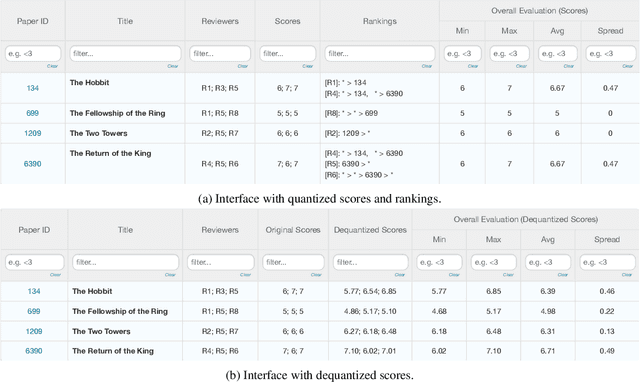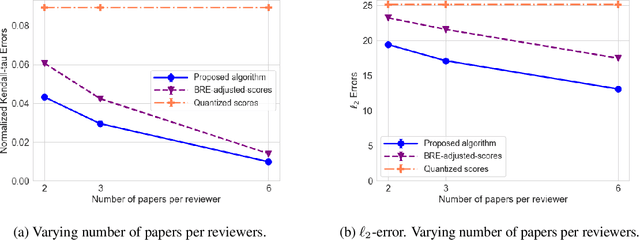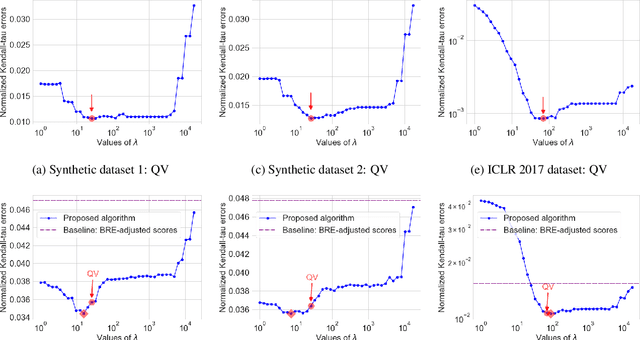Integrating Rankings into Quantized Scores in Peer Review
Paper and Code
Apr 05, 2022



In peer review, reviewers are usually asked to provide scores for the papers. The scores are then used by Area Chairs or Program Chairs in various ways in the decision-making process. The scores are usually elicited in a quantized form to accommodate the limited cognitive ability of humans to describe their opinions in numerical values. It has been found that the quantized scores suffer from a large number of ties, thereby leading to a significant loss of information. To mitigate this issue, conferences have started to ask reviewers to additionally provide a ranking of the papers they have reviewed. There are however two key challenges. First, there is no standard procedure for using this ranking information and Area Chairs may use it in different ways (including simply ignoring them), thereby leading to arbitrariness in the peer-review process. Second, there are no suitable interfaces for judicious use of this data nor methods to incorporate it in existing workflows, thereby leading to inefficiencies. We take a principled approach to integrate the ranking information into the scores. The output of our method is an updated score pertaining to each review that also incorporates the rankings. Our approach addresses the two aforementioned challenges by: (i) ensuring that rankings are incorporated into the updates scores in the same manner for all papers, thereby mitigating arbitrariness, and (ii) allowing to seamlessly use existing interfaces and workflows designed for scores. We empirically evaluate our method on synthetic datasets as well as on peer reviews from the ICLR 2017 conference, and find that it reduces the error by approximately 30% as compared to the best performing baseline on the ICLR 2017 data.
 Add to Chrome
Add to Chrome Add to Firefox
Add to Firefox Add to Edge
Add to Edge